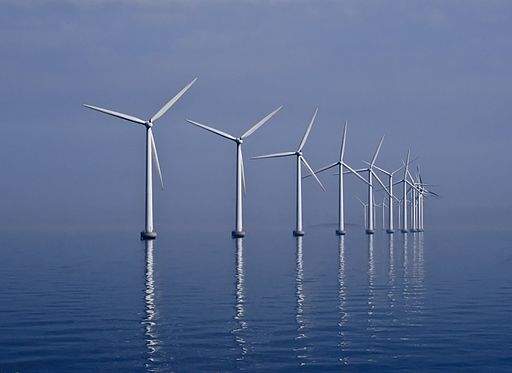
Upcoming demonstrations are planned in the Netherlands as fishermen will protest the Dutch government’s decision to construct further wind turbines in the North Sea.
The plans involve the installment of three windfarms off the Noord-Holland coast and north of the Wadden Islands, sparking anger amongst the fishing community as they claim the turbines will disturb sea life in the area, and cause potentially permanent damage to fish and porpoise populations.
In response to the announcement, fishermen are planning to stage a protest this Saturday, with a number of vessels due to sail into Amsterdam’s central station before their occupants march to the capital’s Damrak canal. Here they are due to scatter bags of fish deemed too small to sell by the EU, which will then be covered in red dye.
The event is being organised by the action group Eendracht Maakt Kracht (EMK) – meaning Unity Brings Strength– which was formed two years ago by fishermen who were dissatisfied with the country’s two main unions.
EMK chairman Job Schot told The Guardian that, “the ramming of seabeds kills everything within 6km”, with the acoustic sound created by turbines “discourag[ing] fish” possibly permanently, and deafening porpoises which then die following their loss of hearing.
Additionally, the group claims that turbines will have taken over a quarter of Dutch fishing waters by 2025, making them inaccessible to larger fishing vessels.

US Tariffs are shifting - will you react or anticipate?
Don’t let policy changes catch you off guard. Stay proactive with real-time data and expert analysis.
By GlobalDataThe recent announcement comes in the wake of a spate of turbine construction plans, with five new windfarms recently approved by the Dutch Government which will collectively cost around €20bn (£17.5bn) to build. This is in addition to the much-anticipated island of turbines on Dogger Bank, a patch of fishing waters 78 miles from the east Yorkshire coast, which is used by Dutch, Danish and UK fishermen.
The construction frenzy is primarily driven by the necessity to stop gas extraction from the Groningen fields, located near Slochteren in the north-eastern part of the Netherlands, due to the increased force of earthquakes in the area. It is also part of the Dutch Government’s attempts to make 40% of the total energy used in the country wind generated by 2030.
Currently, government officials are accused of rushing through wind energy developments without considering or investigating potential consequences on the sea life of the waters chosen.
Indeed, researchers have previously warned that the noise of constructing and operating the turbines, in addition to the electromagnetic fields around the transmission cables, does have an impact on sea life. However, others believe the new constructions will attract new species and could prove beneficial to the area’s ecology.


